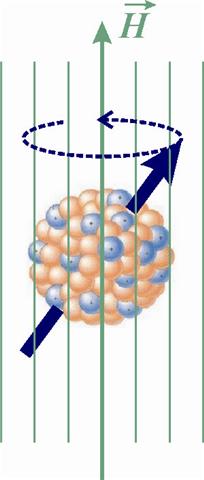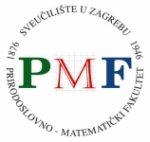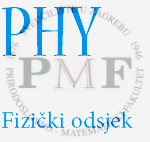Research interests
High Temperature Superconductors
 High-temperature superconductors (HTS) are materials that have a superconducting transition temperature (Tc) above 30 K. Until the discovery of Fe-based pnictide superconductors in 2008, the term HTS was used as a synonym for cuprate based superconductors. The first HTS La2-xBaxCuO4 (Tc = 38 K) was discovered in 1986 by K. A. Müller and J. G. Bednorz, for which they were awarded the Nobel Prize in Physics in 1987. Since then other HTS compounds were found, e.g. YBa2Cu3O7 (Tc = 92 K), HgBa2Ca2Cu3O8 (Tc = 135 K), etc. Although the discovery of HTS dates back 20 years, there is no widely accepted theory to explain their properties.
High-temperature superconductors (HTS) are materials that have a superconducting transition temperature (Tc) above 30 K. Until the discovery of Fe-based pnictide superconductors in 2008, the term HTS was used as a synonym for cuprate based superconductors. The first HTS La2-xBaxCuO4 (Tc = 38 K) was discovered in 1986 by K. A. Müller and J. G. Bednorz, for which they were awarded the Nobel Prize in Physics in 1987. Since then other HTS compounds were found, e.g. YBa2Cu3O7 (Tc = 92 K), HgBa2Ca2Cu3O8 (Tc = 135 K), etc. Although the discovery of HTS dates back 20 years, there is no widely accepted theory to explain their properties.
The crystal structure of all HTS consists of two dimensional copper oxide planes that are separated by other atoms like Sr, La, Y or Ba, and some additional oxygen atoms. The atoms in between the layers serve as dopands. For example if one dopes La2CuO4 with Sr, one introduces charge carriers (holes) into the CuO2 planes. Only by doping, the crystal becomes superconducting. (more)
Nuclear magnetic resonance (NMR)
 NMR is powerful, nonagressive experimental technique, based on magnetism of atomic nuclei. The method is famous for it's application in medical diagnostics, but it has much broader field of applications. In material sciences its main application is in structural investigations. NMR is capable to precisely determine the existence, postition and coordination of atoms in complicated molecules or crystals.
NMR is powerful, nonagressive experimental technique, based on magnetism of atomic nuclei. The method is famous for it's application in medical diagnostics, but it has much broader field of applications. In material sciences its main application is in structural investigations. NMR is capable to precisely determine the existence, postition and coordination of atoms in complicated molecules or crystals.
Discovered by physicists, the first application of the NMR method was in condensed matter physics, and it remains one of the most useful methods for investigations of interactions in solid state. NMR is direct, nonperturbative microscopic probe for magnetism which i) give precise static and dynamic information about localized or itinerant electrons; ii) reveals eventual inhomogeneity due to impurities or charge/spin density waves; iii) discovers existence and type of phase transitions. NMR has proven its strength in investigations of HTS, strongly correlated electronic systems (heavy fermions, quantum magnetism of spin systems), and all other systems in solid state physics (more)
Microwave response of materials
Microwaves are electromagnetic waves with frequencies between 1 GHz and 1 THz (higher than radio frequencies and lower than infrared). In experimental solid state physics, the microwave investigations are useful to study high-frequency transport properties. Frequencies are high enough to avoid the application of electrical contacts, but still low enough to avoid excitations of phonons or e.g. quasiparticles in superconductors.
 There are several possible experimental arrangements for the measurements of microwave response of a sample of interest. We use the method of perturbation of a resonant microwave cavity. Microwave cavity is box made of very conducting material whose dimensions are comparable to the wavelength (~3 cm). When in resonance, standing electromagnetic wave is formed in the cavity. When a sample is placed into the cavity, it causes a weak perturbation to the cavity configuration. The resonant frequency and the Q-factor of the cavity are slightly changed. These changes can be measured, and one obtains valuable information about conductivity, permitivity and/or permeability of the studied sample. (more)
There are several possible experimental arrangements for the measurements of microwave response of a sample of interest. We use the method of perturbation of a resonant microwave cavity. Microwave cavity is box made of very conducting material whose dimensions are comparable to the wavelength (~3 cm). When in resonance, standing electromagnetic wave is formed in the cavity. When a sample is placed into the cavity, it causes a weak perturbation to the cavity configuration. The resonant frequency and the Q-factor of the cavity are slightly changed. These changes can be measured, and one obtains valuable information about conductivity, permitivity and/or permeability of the studied sample. (more)









